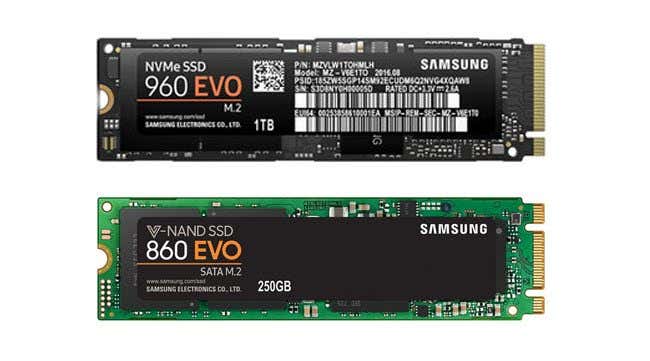I am looking to buy a new computer for about £750. I'm basing it off this PC from CyberPowerSystem. There is a 1TB Seagate BarraCuda SATA-III 6.0Gb/s 7200RPM hard drive, which seems to be ok for my needs (I might upgrade to 2TB, though). As for the SSD, the current selection is a 240GB ADATA Ultimate SU630 2.5" SSD, with 520MB/s read and 450MB/s write speeds.
But there are also options for an M.2 SSD, a 2nd M.2 SSD and a PCI-E SSD. Are these just extra SSDs for my computer to use? I can get a 250GB Kingston A2000 M.2 NVMe PCIe SSD with 2200MB/s read & 1000MB/s write speeds for just £37, which seems like a decent deal. I can also get another one of the same as my 2nd M.2 SSD. All the PCI-E SSDs seem to be well out of my price range, so I'll probably avoid those.
So, what exactly is the difference between an SSD and an M.2 SSD? After a little bit of Googling, I've found out that the M.2 is primarily used as the boot drive (I may be wrong on this), so does this mean that if I get one, it will have all the Windows files on it, making it load up faster when turning on or loading files? And then the regular SSD can be used to just store games and applications that I use regularly, leaving the HDD for bulk storage? Or can I store some applications on the faster M.2 drive?
So, any suggestions for SSDs or just any advice relating to the different types of data storage would be greatly appreciated.
But there are also options for an M.2 SSD, a 2nd M.2 SSD and a PCI-E SSD. Are these just extra SSDs for my computer to use? I can get a 250GB Kingston A2000 M.2 NVMe PCIe SSD with 2200MB/s read & 1000MB/s write speeds for just £37, which seems like a decent deal. I can also get another one of the same as my 2nd M.2 SSD. All the PCI-E SSDs seem to be well out of my price range, so I'll probably avoid those.
So, what exactly is the difference between an SSD and an M.2 SSD? After a little bit of Googling, I've found out that the M.2 is primarily used as the boot drive (I may be wrong on this), so does this mean that if I get one, it will have all the Windows files on it, making it load up faster when turning on or loading files? And then the regular SSD can be used to just store games and applications that I use regularly, leaving the HDD for bulk storage? Or can I store some applications on the faster M.2 drive?
So, any suggestions for SSDs or just any advice relating to the different types of data storage would be greatly appreciated.


